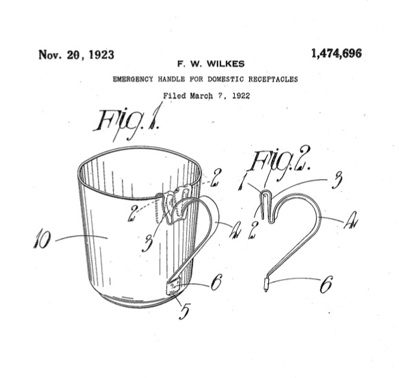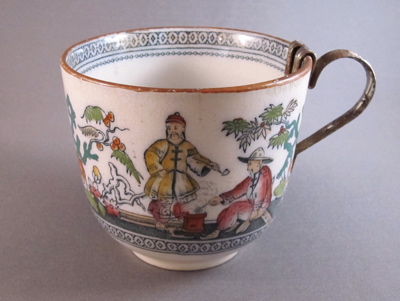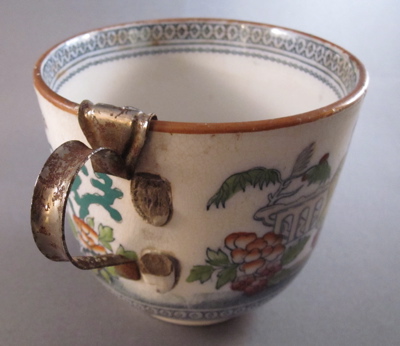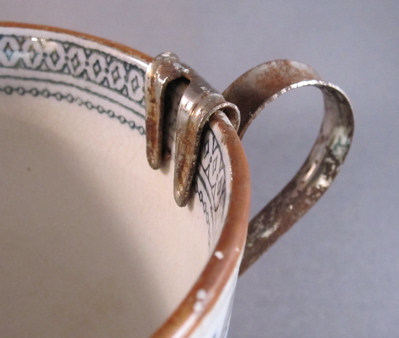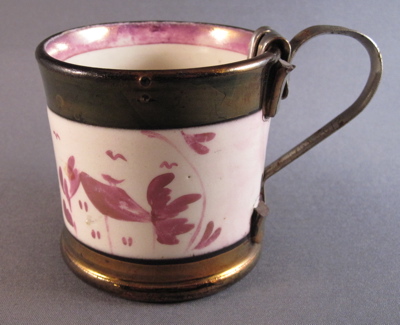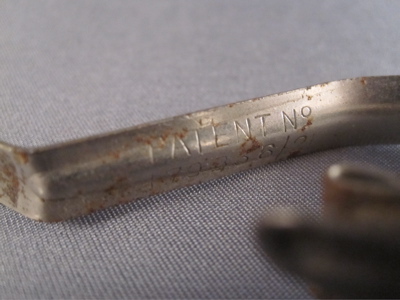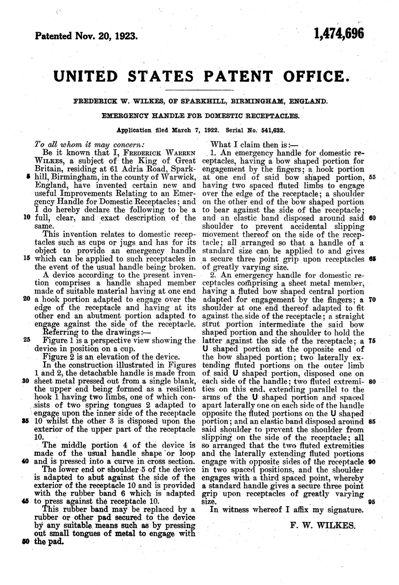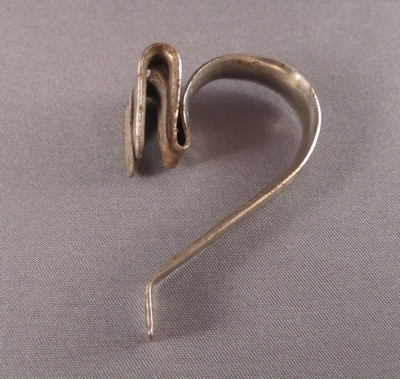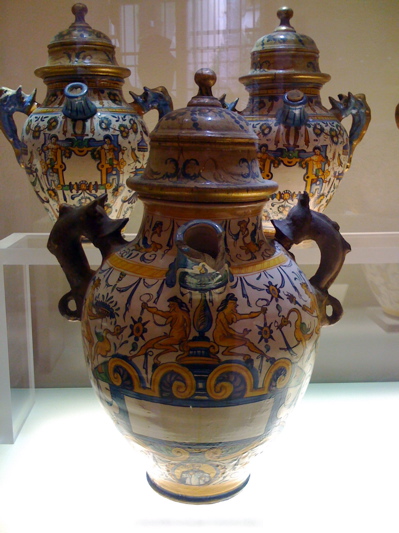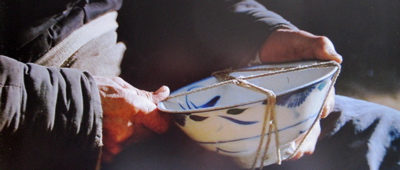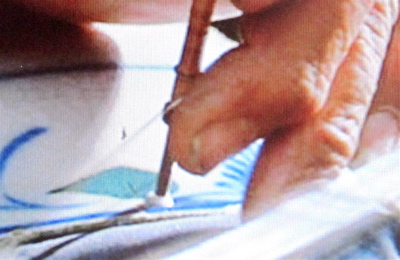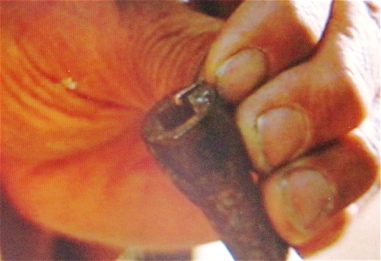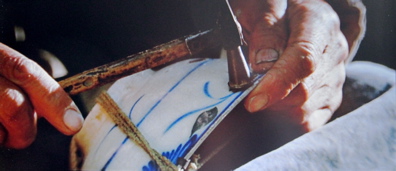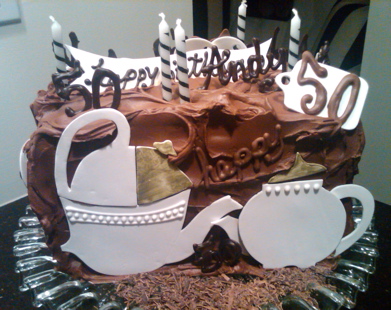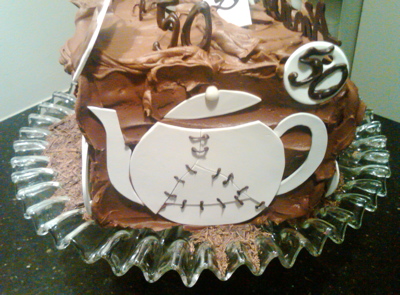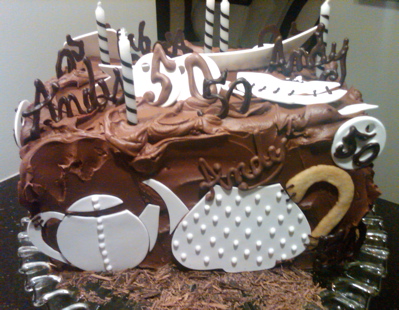I purchased this innocuous cup with “Pekin” transfer decoration in April 2008 and was intrigued by the removable metal handle, an apparent “do it yourself” replacement. Unlike most examples found in my collection, this was obviously not a handmade repair.
Due to heavy rust, the handle appeared to be unmarked and I was unable to proceed with executing any further research.
When I originally added the cup entry to this site in March 2010, I surmised that the handle “looks like something found at a local hardware store”.
Then in April of this year, two years after the discovery of the mysterious replacement handle, I purchased a copper lustre child’s mug with an identical metal handle, which I posted on July 6, 2010.
Luckily this handle was in excellent condition and clearly boasted a patent number.
Reino Liefkes, Senior Curator of the Ceramics & Glass Collection at the V&A Museum in London, recently discovered my blog and sent me the original patent specification and drawing for the “Emergency Handle For Domestic Receptacles”, patented in 1922 by inventor Frederick Warren Wilkes of Birmingham, UK. Upon further research, I found the American patent specification and drawing from 1923, pictured here.
Originally, a tiny rubber band was attached to the lower end of the handle to help cushion it against the delicate ceramic surface
Many thanks to Reino Liefkes for his most appreciated sleuthing!
